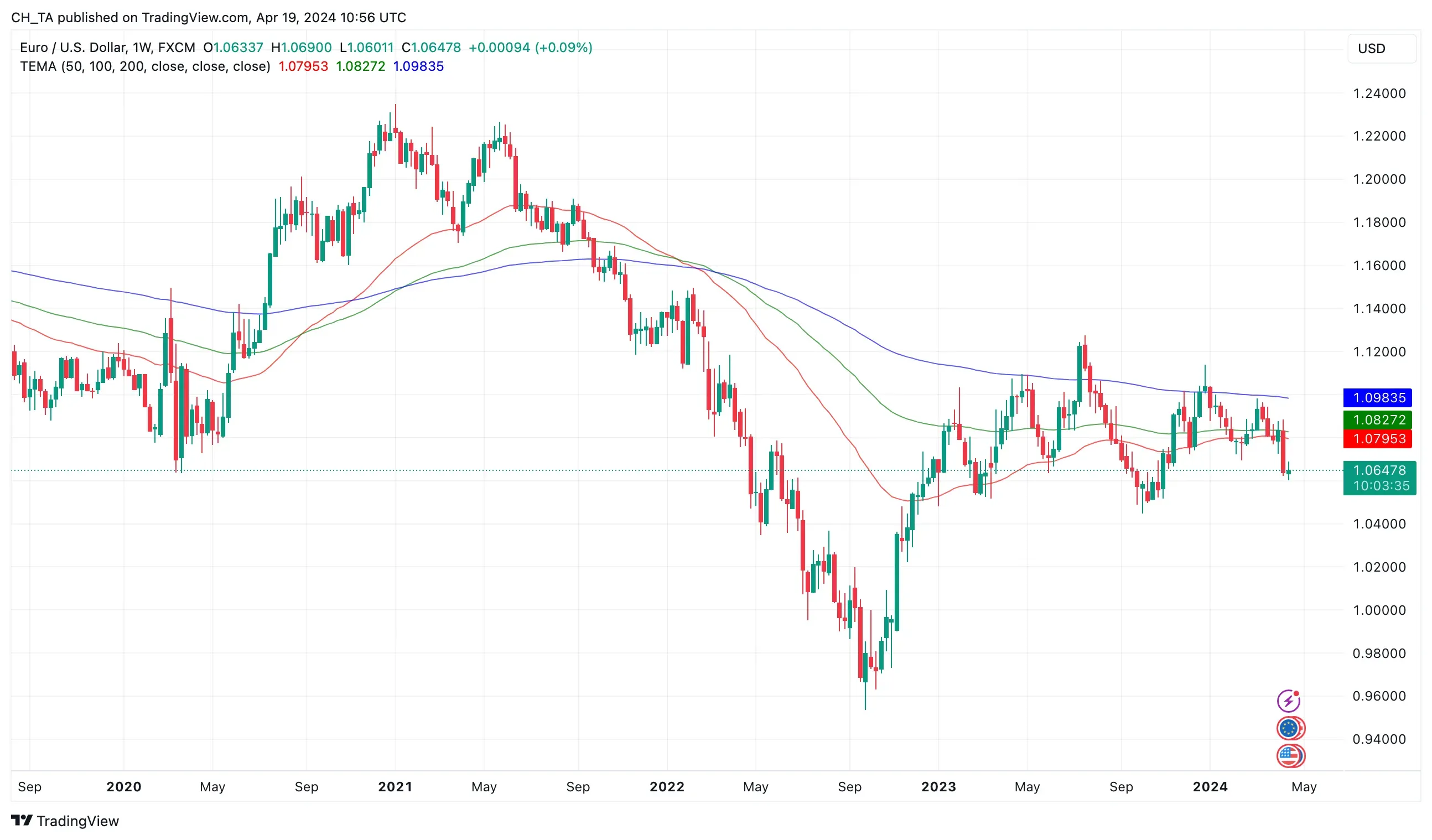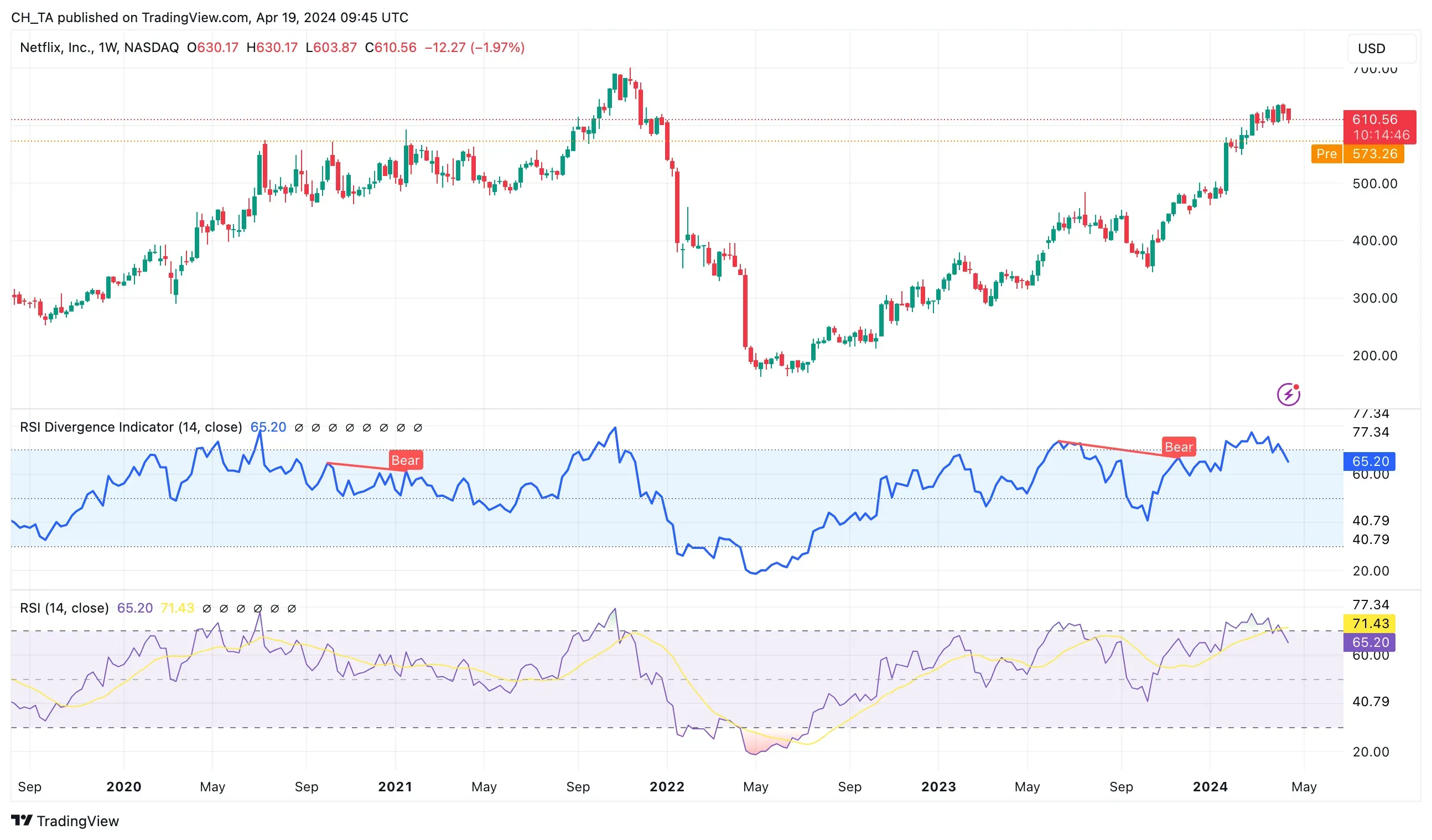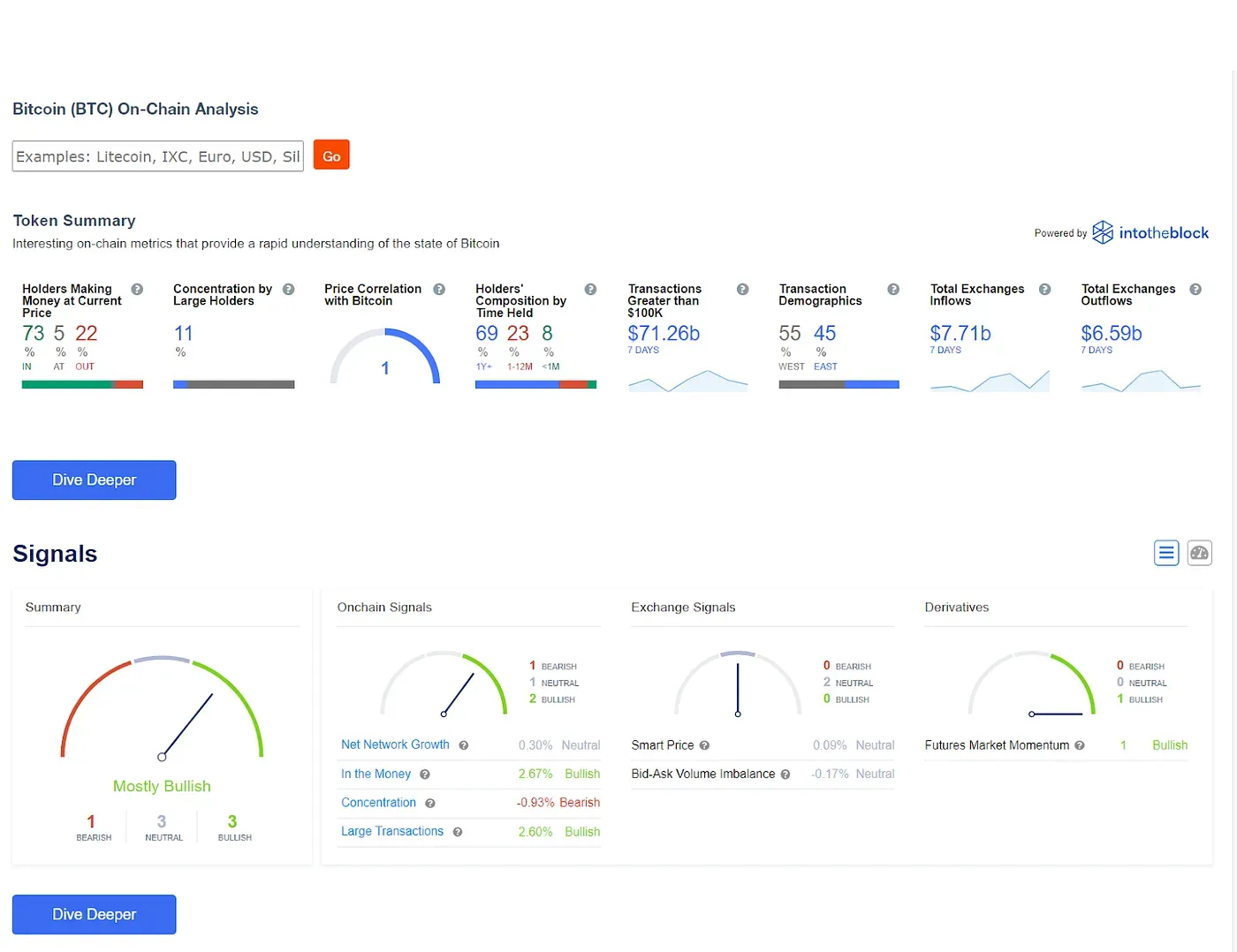 Source: TradingView
Source: TradingView

In the fast-paced world of cryptocurrency trading, staying ahead of the curve is essential for success. While they are not a guaranteed solution for trading success, crypto trading signals serve as a crucial tool in transforming trading from a gamble into a profitable venture. Learn the essentials of signal trading and the tools to apply it in the crypto market from our new guide!
Key Takeaways
- In trading, signals are used to identify buy or sell opportunities by analyzing market indicators. These signals can be generated through technical or fundamental analysis to help traders make informed decisions and manage risk effectively.
- Trading signals are crucial in the cryptocurrency market, offering buy/sell opportunities based on technical analysis and market trends. In addition to traditional market analysis, crypto traders also utilize unique on-chain signals derived from blockchain data to gauge the sentiment and potential price changes of specific cryptocurrencies.
- Traders don’t have to create signals for themselves: crypto trading signal providers offer valuable insights and recommendations to help traders make informed decisions in the volatile cryptocurrency market. They analyze market trends, technical indicators, and on-chain data to generate signals for buying or selling specific cryptocurrencies.
What are Trading Signals?
In trading, signals are indicators or triggers that highlight buy or sell opportunities in the market. Traders use signals to make informed decisions about when to enter or exit trades.
Signals can be generated through technical analysis, fundamental analysis, or a combination of both. Common signals include moving average crossovers, RSI divergence, MACD crossovers, and support/resistance levels. Traders use signals to help them identify trends, confirm market movements, and manage risk.
How do trading signals work? Let’s take a look at the most common ones. Once you see it for yourself, starting signal trading will get easy as a pie!
Moving Average Crossovers
The rule of thumb for crossovers is when a short-term moving average crosses above a long-term moving average, it may signal a potential uptrend. Conversely, when a short-term moving average crosses below a long-term moving average, it may indicate a change to the downtrend.
This chart shows the EURUSD forex signals: 50, 100, and 200-week exponential moving averages (EMA). Therefore, the short-term MA is red, the long-term one is blue, and the green one is the average of the two.
Test yourself: which types of crossovers can you see? Which MAs crossed over before the late 2020 increase?
Relative Strength Index (RSI)
RSI is another indicator that points to trend changes but it is also useful to estimate the momentum of recent price changes. The RSI chart looks like a line graph, where the top and bottom 30% are highlighted.
An RSI value above 70 is often considered overbought, suggesting a potential reversal or correction. An RSI value below 30 is typically considered oversold, signaling a potential buying opportunity. However, reading RSI straightforwardly gives false positives, so it has to be used in tandem with other technical analysis methods.
 Source: TradingView
Source: TradingView
In the chart above are two RSI-related indicators: RSI divergence and RSI with a moving average. RSI divergence shows how the asset price differs from the RSI value. Lower highs are highlighted as a bearish signal. The RSI itself consists of a purple line with a highlighted range between 30 and 70. The yellow line is the simple moving average of RSI, by default calculated from 14 time units. Crossovers work here, too!
Test yourself: is NFLX overbought? Which crossover is in effect?
MACD Crossovers
 Source: TradingView
Source: TradingView
Another indicator that uses crossovers is moving average convergence/divergence, abbreviated as MACD. How do you interpret the MACD chart? The blue line is the MACD line and the orange line is the signal line.
The green and red bars are a histogram that graphs the distance between the lines: positive (green) and negative (red).
When the MACD line crosses above the signal line, it may indicate a bullish trend. Conversely, when the MACD line crosses below the signal line, it may suggest a bearish trend. Crossovers that traders are watching out for refer to the conditions when these two lines meet. The histogram helps to interpret how far apart these lines are (divergence) or when they will meet (converge).
Test yourself: are the lines converging or diverging? Is TSLA in an uptrend or downtrend?
Support and Resistance Levels
Last but not least, traders can infer signals from the historic price performance or weigh it against additional factors such as volume. There are dozens of methods to determine support and resistance levels, which are all then used to define trading opportunities.
 Source: TradingView
Source: TradingView
Price levels where an asset has historically struggled to move above (resistance) or below (support) can signal potential reversals or breakouts. In this chart, they are drafted with blue lines: depending on where the price is relative to them, they change their role. Traders often look for confirmation of these levels through price action and volume.
Can you trade crypto with signals?
The cryptocurrency market is no different when it comes to using trading signals. Various signal providers and tools offer signals specifically for the cryptocurrency market. Likewise, they can help traders identify potential entry and exit points based on technical analysis, market trends, and other factors.
The traditional market analysis generally holds for the crypto trading signals, too. The same buy/sell signals, price breakout, and volume signals work here as well. Crypto traders may pay more attention to signals that analyze social media sentiment, news sentiment, or market sentiment than stock traders to gauge the overall market sentiment towards a specific cryptocurrency.
 Source: Into The Block
Source: Into The Block
Thanks to blockchain, however, traders have access to unique crypto signals, usually referred to as on-chain signals. You can track the flow of almost all assets and view all addresses on most public blockchains, which unlocks a wealth of information on the digital asset’s value and potential price changes. For example,
- Exchange Inflows and Outflows: Monitoring the amount of cryptocurrency flowing into and out of exchanges can provide insights into potential buying or selling pressure.
- Whale Transactions: Large transactions by whales (holders of significant amounts of cryptocurrency) can indicate market sentiment or potential price movements.
- Token Age Consumed: Tracking the movement of older tokens being transferred can signal long-term holders selling or moving their assets.
- Miner Flows: Analyzing the movement of newly mined coins can indicate miner sentiment or potential sell-offs.
- Stablecoin Flows: Observing the movement of stablecoins between wallets can provide insights into potential market liquidity or trading activity.
- Token Balances on Exchanges: Monitoring the amount of a specific token held on exchanges can indicate potential supply and demand dynamics.
On-chain signals are sourced from an immense amount of data, analyzed by special algorithms. It only provides you with the data, but you still need to understand the context and consider other market factors to make informed trading decisions.
Note that while trading signals can help make informed trading decisions, they should be used in conjunction with your own analysis and risk management strategies. As with any form of trading, there are risks involved, and it’s essential to understand the signals you are using and how they fit into your trading strategy as a whole.
Pros and Cons of Crypto Signal Trading
Pros
Crypto signals have multiple reasons in favor of using those. It can be a valuable tool for both experienced and novice traders looking to improve their trading performance and stay informed about market opportunities.
- Signals can help traders save time by providing them with pre-analyzed trading opportunities. This can be especially useful for traders without the time for in-depth market analysis for any reason.
- Crypto signals providers sometimes include expert analysis and insights to help traders make more informed trading decisions with additional opinions to consider.
- Trading signal services can offer automated trading options to execute trades automatically based on the signals. This eliminates the influence of emotions from trading decisions and ensures the timely execution of trades.
- Signals can help traders identify trading opportunities across a wide range of cryptocurrencies, enabling a greater degree of diversification in their trading portfolio.
- By following signals and observing how they play out in the market, traders can learn more about technical analysis, market trends, and trading strategies and improve their skills over time.
- Some signal providers include risk management strategies, such as stop-loss orders or position sizing recommendations, which can help traders manage their risk effectively.
Cons
Using signals in trading seems like the only natural choice if it has so many perks! But there are also risks that you must be aware of.
- Not all providers, free and paid alike, are trustworthy or accurate. There is a risk of receiving incorrect or misleading signals, which can lead to financial losses if acted upon.
- To make things worse, if some sources are negligent, some are straightforwardly malicious. Coercing traders into pump-and-dump schemes with fake crypto trading signals is not unheard of.
- The crypto market is highly volatile, and prices can change rapidly. Signals may not always be able to accurately predict market movements, leading to unexpected outcomes for traders.
- Over-reliance on signals for trading decisions limits a trader’s ability to develop analytical skills and an understanding of market dynamics. It’s important to use signals as a tool for guidance rather than as the sole basis for trading decisions.
- Signal services may have subscription fees or additional costs, which can eat into trading profits. Traders should consider the cost-effectiveness of using signals before subscribing to a service.
- Sharing personal or financial information with signal providers can pose security risks, especially if the provider’s platform is not secure enough.
- Automated trading based on signals can be convenient, but it also carries the risk of technical failures or glitches that could result in unintended trading actions. Traders should monitor automated systems closely to ensure they are functioning as intended.
Crypto Trading Signals Providers
Before we suggest crypto trading signal providers, let’s review where you can start or continue searching for crypto signals that fit your trading strategies.
| Brief | Pros | Cons | |
| Free Signal Groups | Public groups on messaging platforms like Telegram or Discord where traders share cryptocurrency signals for free | A good starting point for beginners | The quality and reliability of signals varies wildly |
| Paid Signal Services | Subscription-based services that offer more in-depth analysis, higher quality signals, and additional features | Extra features such as trading bots or personalized support | Subscription does not always guarantee the quality or safety of the service |
| Automated Trading Platforms | Automated trading platforms that execute trades on behalf of users based on predefined signals | Useful for traders who want to take a hands-off approach | Lack of oversight can lead to unintended results |
| Social Trading Platforms | Platforms that allow users to follow and copy the trades of successful traders | Follow specific traders based on their performance history and trading style | Success on a social platform does not necessarily translate to success in trading |
| Algorithmic Signal Providers | Advanced algorithms that analyze market data and generate trading signals | A more systematic and data-driven approach to trading | Hardly any algorithm is perfect and ultimately, it is very similar to automated trading |
| Technical Analysis Tools | Tools that help traders analyze market trends, identify patterns, and generate their own signals based on technical indicators | A higher degree of control over the trades | Requires advanced knowledge and expertise to use them correctly |
Free Crypto Trading Signals Providers
For each type of provider above, the ChangeHero team suggests a free crypto signals provider that you can try. Don’t be discouraged if it’s not an immediate match: there are many more legitimate options in each category!
- If you use Telegram, subscribe to CoinCodeCap Classic. They provide a daily stream of original crypto updates and signals for free, with the option to upgrade to a paid subscription.
- 3Commas trading bots can be set up to execute trades automatically on certain signals and are free to start. It’s praised as the best crypto signals provider in many other sources, so we are only adding a voice to the choir here but trust us, it’s for a reason.
- Another obvious pick, this time for a social trading platform, is the TradingView insights feed. Being the one-stop shop for traders of all calibers, this platform sets a certain standard for the quality of posts, and most of the time, the community members meet it.
- AI is all the rage in signal trading, and TokenMetrics turns it into the killer feature. They offer both free and paid plans but the AI-powered signals are present in both.
- In addition to indicators and oscillators by TradingView, there is another resource with equally insightful metrics worth checking out: altFINS. You can view the explainers and success rates for every indicator in a few clicks.
Paid Crypto Signal Providers
For the list above, we’ve picked the options that are already decent as free crypto signal providers. Needless to say, their paid services should help you step up the trading game even more. For reference, here are the pricings:
- The lifetime CoinCodeCap paid channel access is $499. Users can start with a monthly plan with a 7-day money-back guarantee.
- 3Commas subscription plans range from $37 to $79 and enable dozens of running signal bots. The plan can be customized to suit your needs and demands.
- The TradingView subscription turns an already useful platform into a powerful dashboard with deep analytics. The lowest price to pay for a month is $12.95 (non-professional Essential annual plan) and the ultimate experience will cost up to $600/month.
- Token Metrics offers an Advanced plan with research reports and predictions for $399.99/yr and a Premium plan with webinars and early access for $1,999/yr.
- The Basic plan of altFINS is currently $90/year or a one-time $160 payment. It has access to all features of the service (signals, alerts, videos, channels, etc.), although limited in comparison to Essential and Premium plans.
Conclusion
Crypto signals are not the magic solution to crack the code to trading success, unfortunately. Nevertheless, it is a vital tool to turn trading from gambling into earning. The best part is that you keep the choice of whether you want to trust someone else to provide you with signals or do the homework and follow your own decisions.
Keep learning by reading new articles about crypto trading every week in our blog! If you want updates daily, follow us on X, Facebook, and Telegram.
Which crypto signal is best?
Determining the best crypto signal provider depends on individual trading preferences and goals. It’s recommended to research and compare different providers based on factors like accuracy, reputation, transparency, and user reviews. Ultimately, the best signal provider is one that aligns with your trading strategy and helps you achieve your financial objectives.
How do you trade crypto signals?
To trade crypto signals, you need to subscribe to a signal provider, receive the signals, and then execute the trades on a cryptocurrency exchange. It’s important to follow risk management strategies, verify the signals with your own analysis, and consider the signal provider’s track record before making any trades. Always stay updated on market conditions and adjust your trading strategy accordingly.
Is crypto signal free?
Crypto signals can be free or paid, depending on the signal provider. Free signals may not always be as reliable as paid signals, so it’s essential to do your own research and due diligence before following any signals. Paid signals often offer more detailed analysis and support, but it’s crucial to choose a reputable and trustworthy signal provider to maximize your chances of success.
Are crypto signals reliable?
Crypto signals can be a helpful tool for trading, but they are not always reliable. It’s essential to use signals as one of many factors in your trading decisions and not rely solely on them. Always do your own research and analysis before making any trades based on signals.



